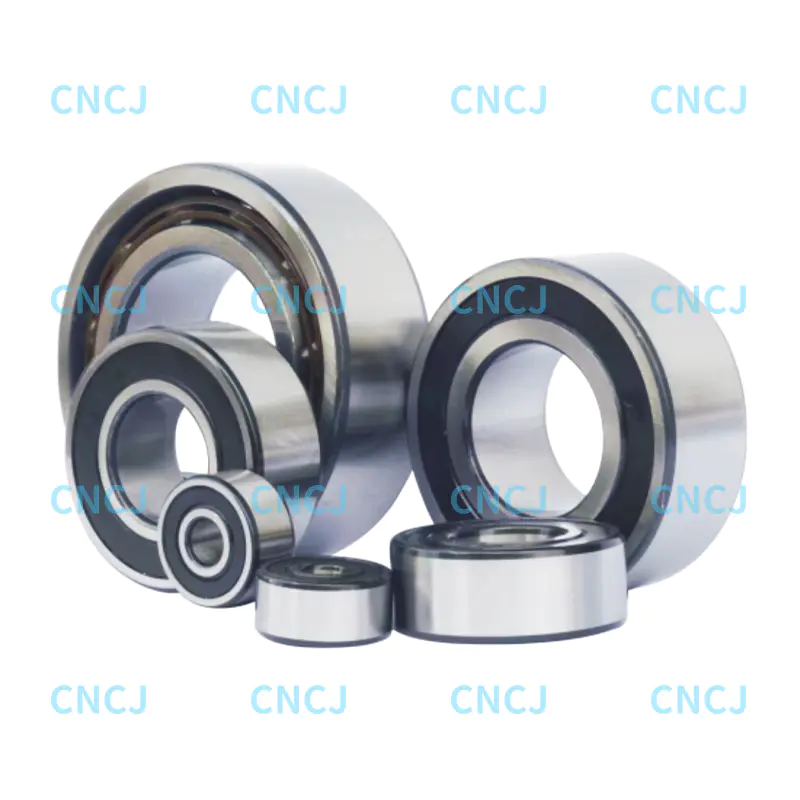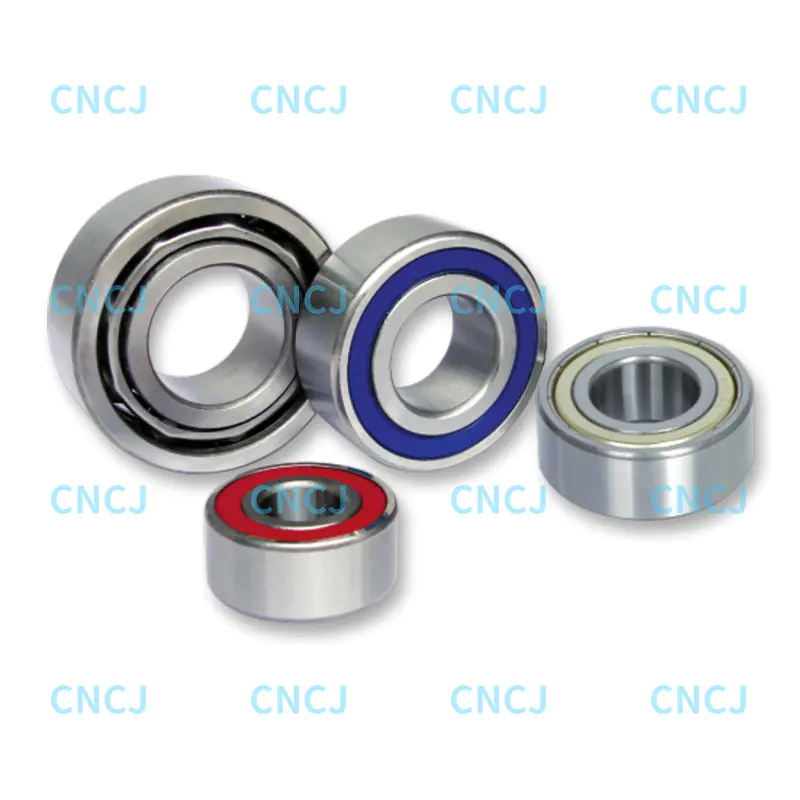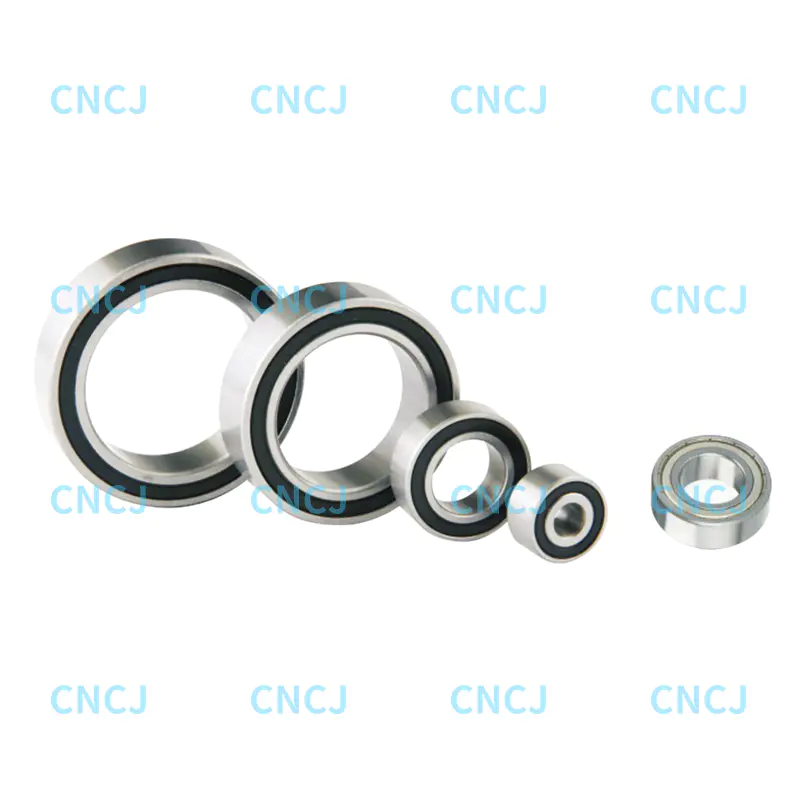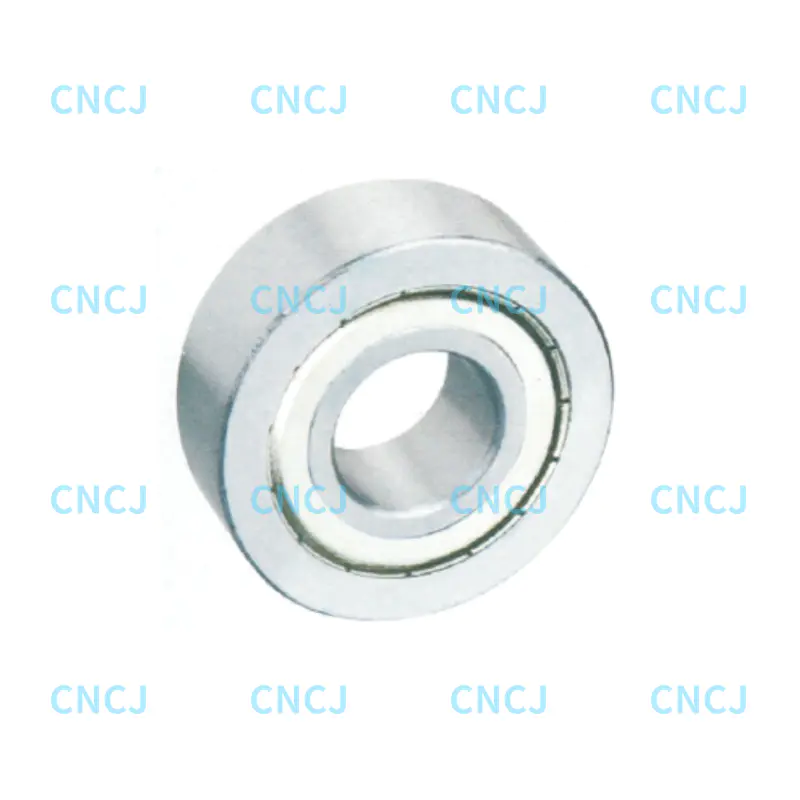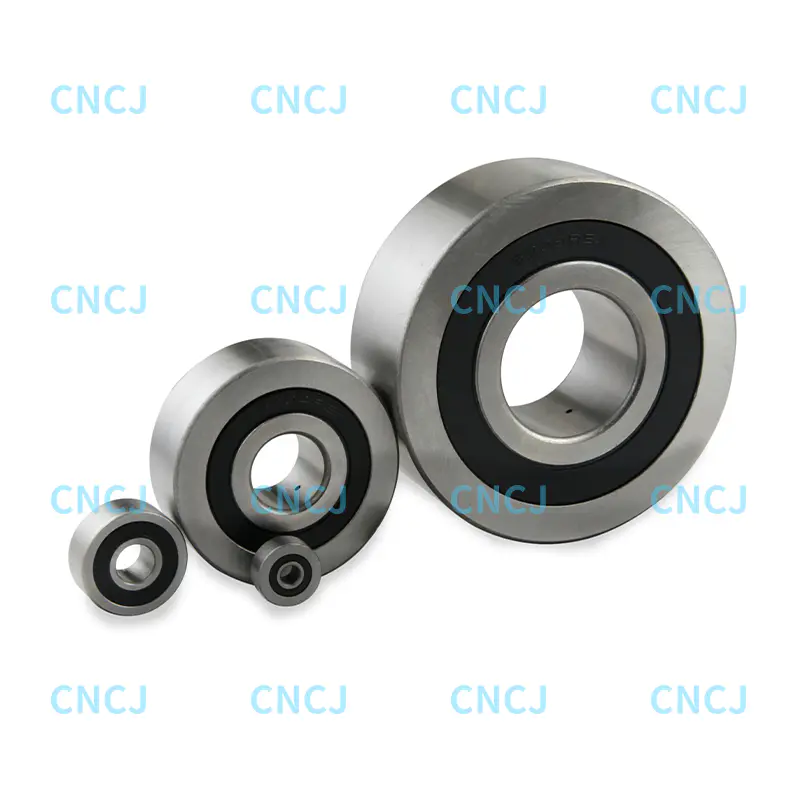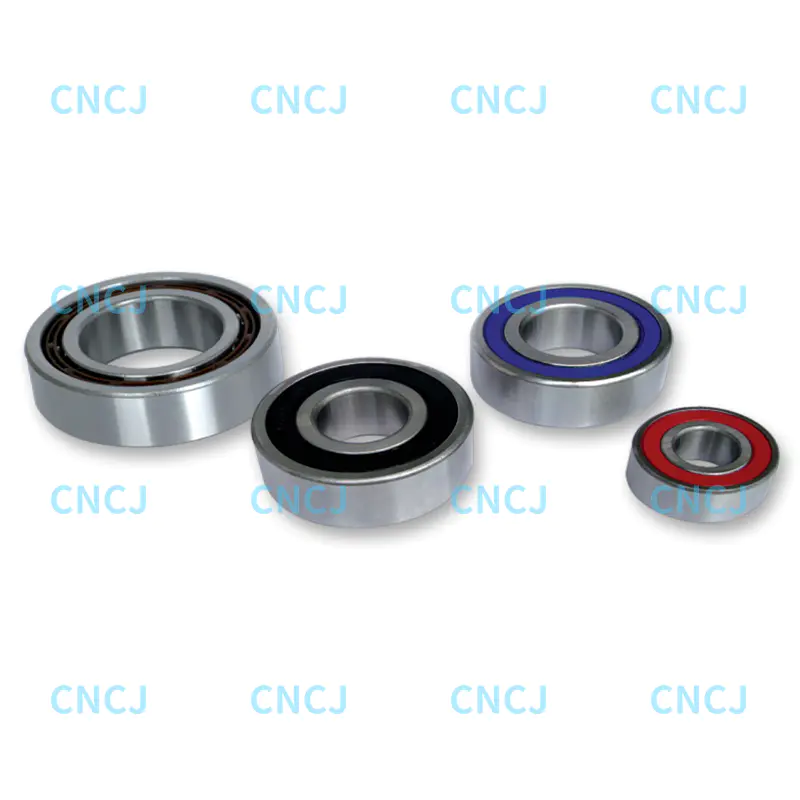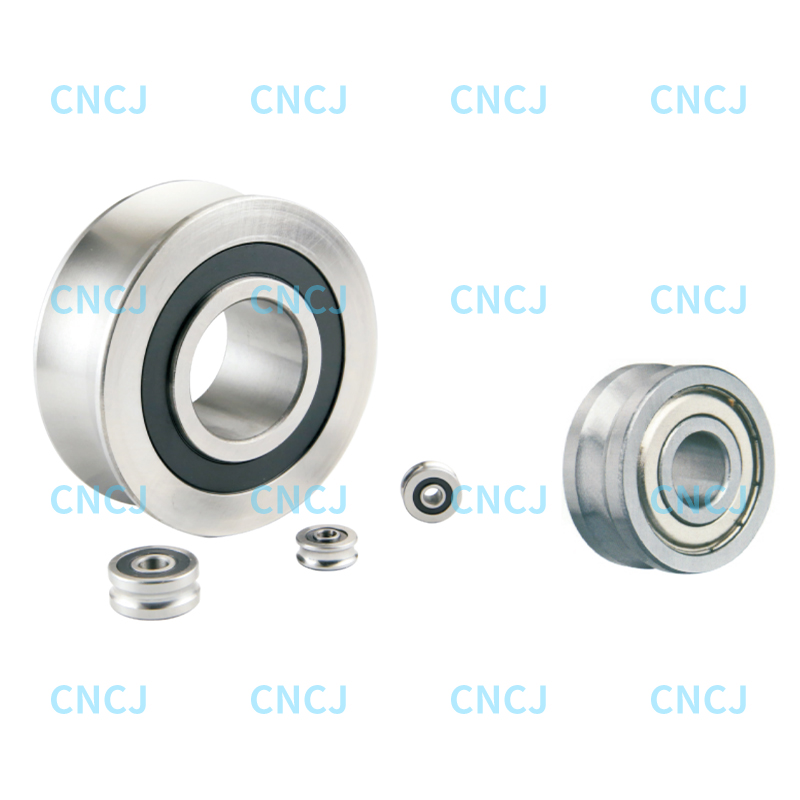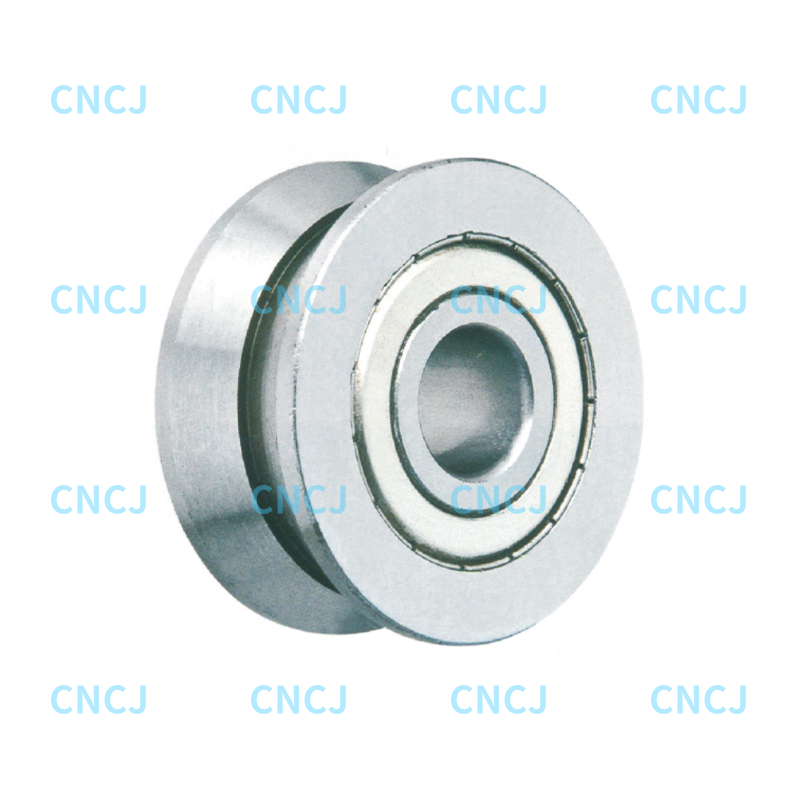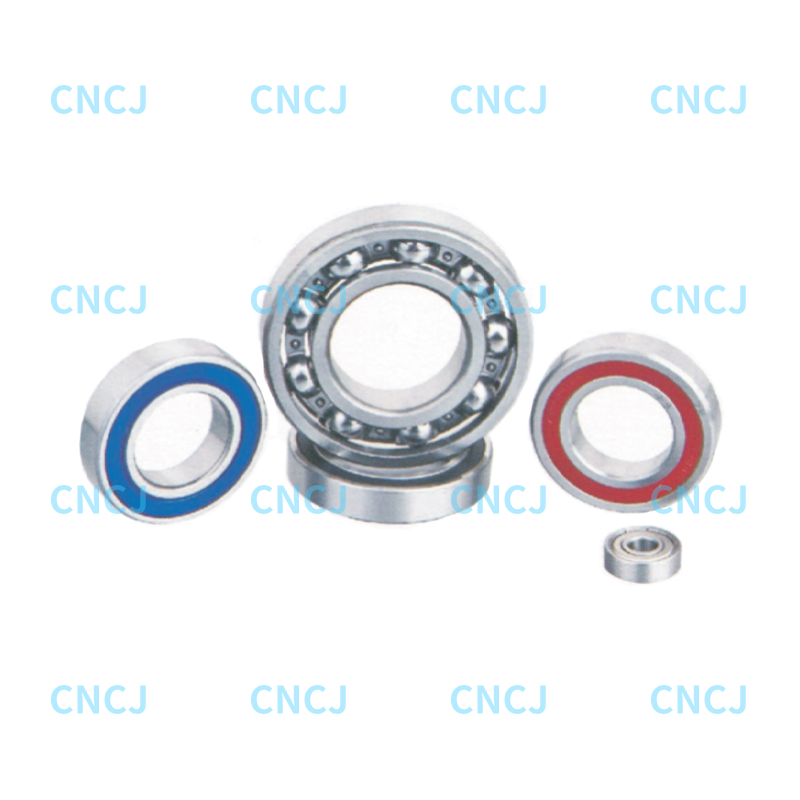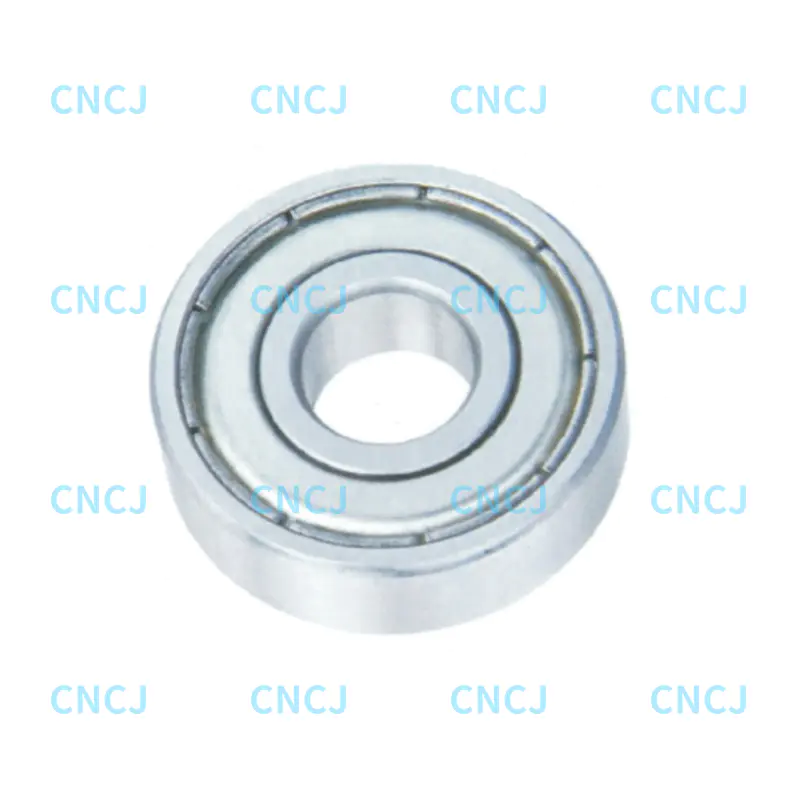1. The role of double row angular contact roller bearings
Double row angular contact roller bearings are high-precision bearings that can simultaneously withstand radial, axial and moment loads. They adopt a unique double row 45° contact angle design and have higher rigidity and load capacity than single row bearings. Its core structure includes four key components: precision ground tapered rollers provide line contact rather than point contact, which increases the axial load capacity by more than 50%; specially designed double row cages ensure precise roller guidance; optimized inner and outer ring raceways are carburized to improve surface hardness; the adjustable preload design allows the bearing to adjust the clearance according to the application scenario. The dynamic load coefficient (Cr) of this type of bearing is usually in the range of 200-500kN, the static load coefficient (Cor) can reach 300-700kN, and the speed is in the range of 3000-6000rpm due to different sealing forms. It is suitable for heavy loads, high speeds and bidirectional axial positioning.
2. Application scenarios and selection guide
Double-row angular contact roller bearings have three typical applications in the industrial field: machine tool spindle systems (especially turning and milling machining centers) require them to provide an axial positioning accuracy of ±0.002mm; wind power gearboxes are used to support planetary gear trains and withstand alternating wind load torque; heavy-duty vehicle hub units use their double-row structure to resist complex road impacts. Five parameters should be considered when selecting: the basic rated life should be greater than 30,000 hours of continuous operation; the working clearance is recommended to be C3 group to adapt to thermal expansion; the lubrication method is selected according to the speed. Grease lubrication or oil mist lubrication; the sealing solution is preferably a labyrinth + contact composite seal in a dusty environment; special coatings such as WS2 solid lubrication are suitable for special temperature (-50℃~+250℃) occasions.
3. Fault diagnosis and solutions
Five signs and solutions for early failure: High-frequency howling usually indicates insufficient lubrication, and substances containing MoS2 need to be added immediately; A sudden temperature rise of more than 10°C may be caused by cage deformation, and the machine should be stopped to check the roller guide status; The peak of periodic vibration appears at 1 or 2 times the frequency, indicating that the clearance is too large and needs to be re-preloaded; Brown raceway wear marks are a sign of micro-motion corrosion, and lubricants containing rust-proof additives need to be used instead; Metal debris adsorbed on the magnetic oil plug indicates that fatigue peeling has begun, and it must be replaced in a planned manner. Special working condition problems: The abnormal noise of the machine tool spindle at the moment of tool change can be reduced by using ceramic roller bearings to reduce the inertia effect; The "pseudo-Brinell indentation" of the wind power yaw bearing requires the installation of a micro-motion protection kit; The axial movement of construction machinery during the start-stop stage is recommended to be upgraded to an intelligent preload system. Note that tapered bearings must be replaced in pairs, and it is strictly forbidden to mix inner and outer rings from different manufacturers; Disassembly of interference fit parts requires uniform heating below 200°C to avoid local overheating and material annealing.
4. Maintenance and care points
During the installation phase, hydraulic nuts or induction heaters are required to be used for assembly to avoid direct hammering and damage to the raceway. The axial preload needs to be adjusted three times: 50% of the design value is applied during initial installation, tightened to 80% after 30 minutes of operation, and calibrated to the standard value after a 72-hour running-in period. Three key indicators should be monitored during daily operation: the vibration speed does not exceed 4.5mm/s; the grease replenishment cycle follows the operating hours (2000-8000 hours) or the acceleration sensor prompt. Deep maintenance needs to be performed every 20,000 hours or 2 years: soak in kerosene after disassembly, and then clean with a special bearing cleaning machine; magnetic particle inspection to check the micro cracks in the raceway; the measured clearance change exceeds the initial value by 15%, which requires replacement; the old grease should be drained when refilling the grease. Special environments such as bearings on shipping container cranes also require monthly silver chloride test paper corrosion tests.

 English
English 中文简体
中文简体 Deutsch
Deutsch Español
Español